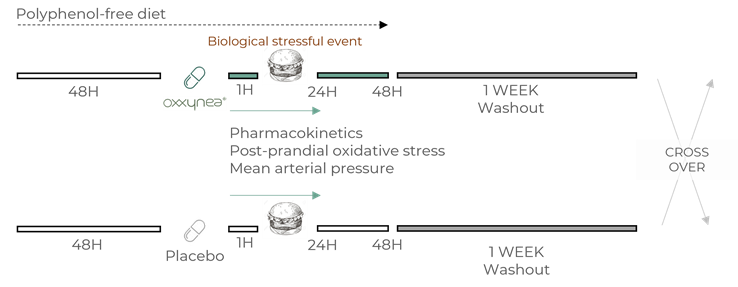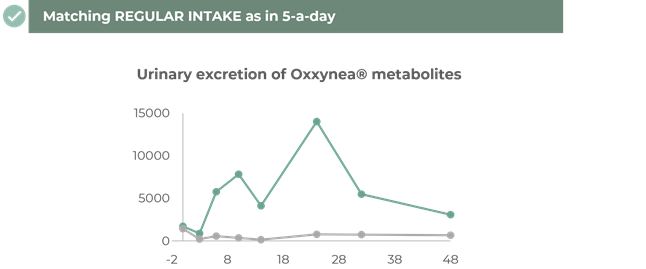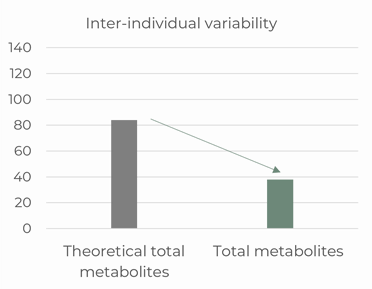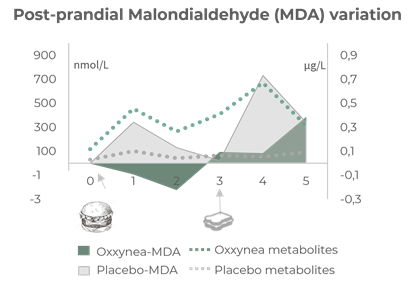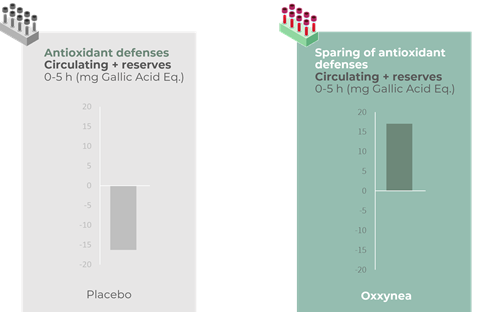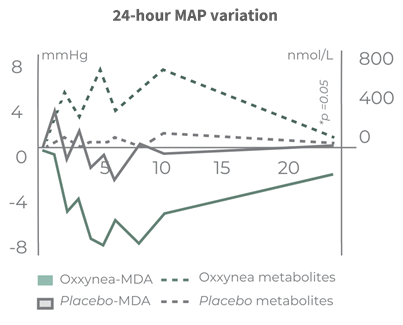
Polyphenol concentrates as in 5-a-day
Oxxynea® is a plant-based ingredient providing polyphenols as in the daily consumption of 5 servings of fresh fruit and vegetables. The large spectrum of polyphenols (100+) in Oxxynea® protects the metabolism over 24 hours. Supported with a clinical study. Data available to support equivalence claims to fill the nutritional gap. From 90 mg/day.
Polyphenols as in 5 servings of fruit & vegetables
The benefits of fruit and vegetables are derived from the cumulative power of vitamins, minerals, fibres and polyphenols.
Polyphenols are naturally present in plant-based foods and are the first source of dietary antioxidants for humans. Their rapid elimination and the absence of storage in the body explain the need of regular intake. They are key nutritional compounds responsible for the maintenance of physiological homeostasis.
The WHO recommends consuming 5 servings of fruit and vegetables a day (FAO/WHO 2004).
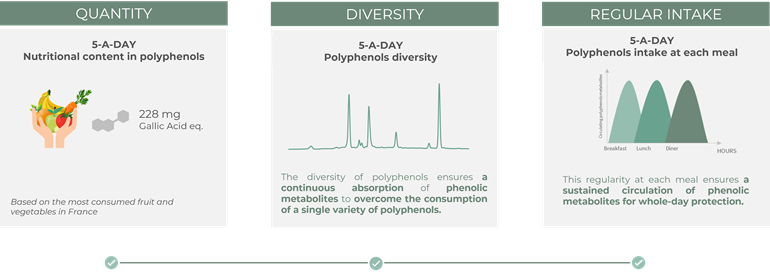
But the recommended 5 servings daily struggle to be followed, worldwide.
Oxxynea® - Key features
-
FILL THE NUTRITIONAL GAP
A daily intake of 90 to 450 mg/day provides the same quantity of polyphenols as in 1 to 5 servings of fruits and vegetables - 7 SELECTED BOTANICALS
-
100+ POLYPHENOLS IDENTIFIED
-
24-HOUR PHENOLIC LOAD
Nutrikinetic study confirms a sustained release of metabolites from the diversity of bioactive polyphenols -
PROVEN EFFICACY TO MAINTAIN REDOX HOMEOSTASIS
Clinically proven metabolic protection
Oxxynea® is not intended to replace a balanced and diverse diet.
Science supporting Oxxynea®
Oxxynea® has been evaluated in a double-blind randomized, placebo-controlled clinical study conducted on healthy subjects in a cross-over design to evaluate the nutrikinetic and acute benefits of selected polyphenols on the protection against oxidative stress during the post-prandial period.
Regulatory & Certifications
Non-GMO, Halal, gluten-free, suitable for vegans
References
Romain et al.; Nutrients, 2022, 14, 4913
This website is intended to provide information about Fytexia’s ingredients, used in various food/dietary supplement products around the world. It is only intended for business to business and to provide information to food/dietary supplement professionals and is not designed for the general public. Statements used on this website have not been evaluated by the Food and Drug Administration or any other competent authority. Products are not intended to diagnose, treat, cure or prevent any disease.





